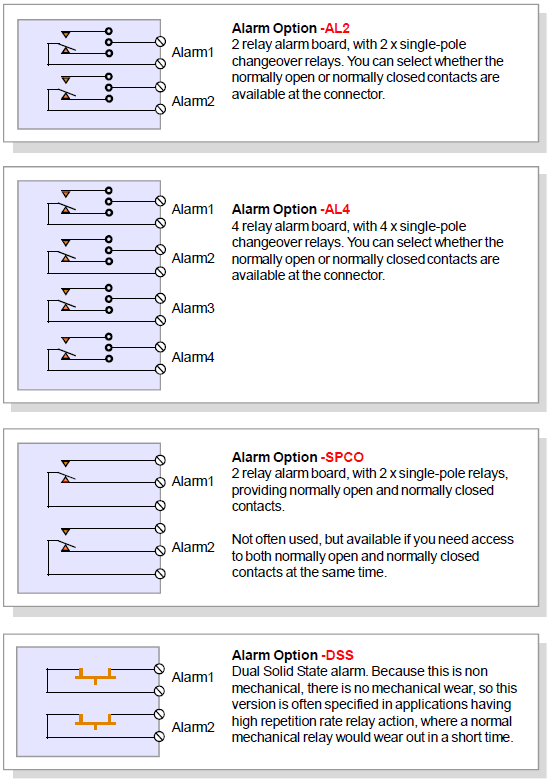
What are alarm relay outputs used for?
It is often useful to compare your measurement to a reference value and create an output if your measurement goes above or below the reference value.
For example, you may wish to control the level in a storage tank, so that once the level drops to a minimum acceptable level, a relay switches on a pump to refill the tank to a maximum chosen level. This technique reduces the burden on the pump and switchgear as the level is allowed to vary in a band, rather than trying to maintain a fixed volume.
Another common application for the alarm relay outputs is to control the amount of product being filled into bags, boxes, hoppers or vehicles. The alarm relay shuts off the feed once the required amount has been loaded. A refinement to this system is known as ‘in-flight compensation’. This shuts the relay shortly before the final weight is achieved, because there will be some material still ‘in-flight’ which will add to the final weight once it lands. The INT4 series of panel meters can automatically adjust the amount of in-flight compensation to allow for variations in material flow characteristics caused by changes in moisture content, particle size etc.
Relays can also have fully adjustable hysteresis to prevent relay chatter and can be set to be normally de-energised or normally energised, for creating failsafe alarm systems.
We use high quality gold-plated relay contacts to give you the very best reliability in your system.
You can compare your alarm setpoints with the gross or nett value of your measurement, useful in many batching applications.

Our alarm relay outputs are also available as solid state devices, if that suits your application better. In addition, we include timers to allow you to delay the activation of an alarm relay unless the alrm condition has been present for a certain amount of time. Similarly you can delay the reset of the alarm unless the condition has been clear for a preset amount of time.
For a full description on the capabilities of the alarm relays in the INT4 series, please see INT4 – Alarms Outputs – Manual
